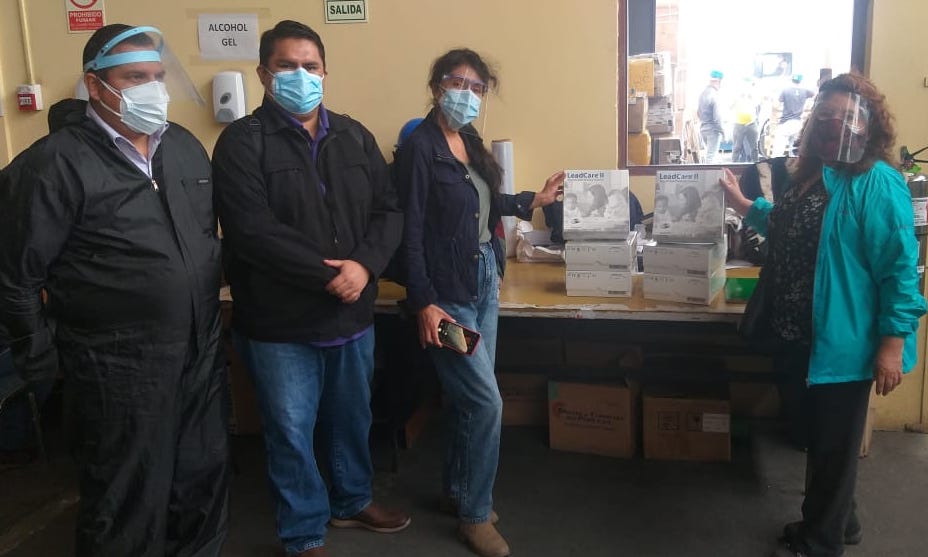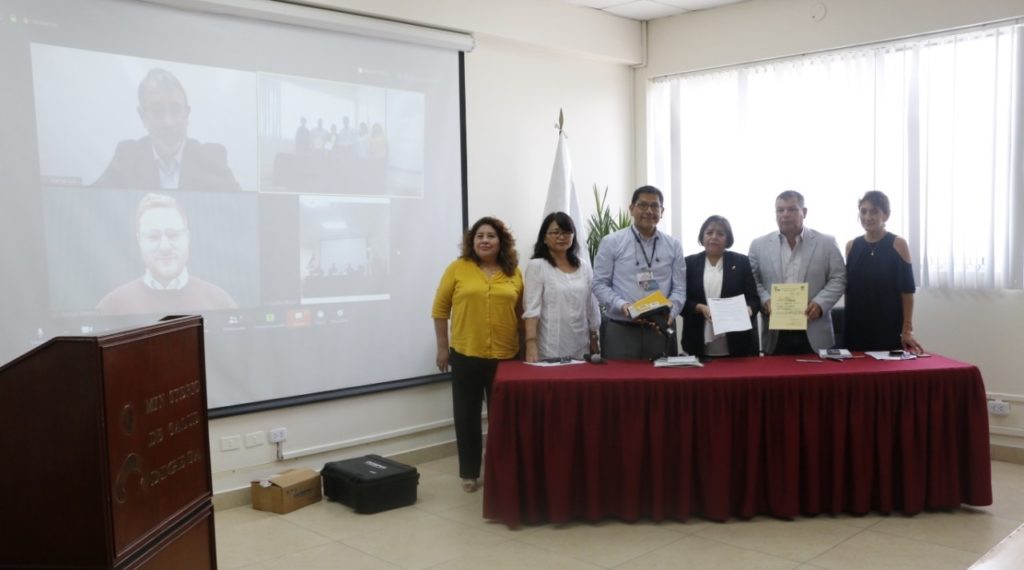Laura Nayhua Gamarra: Epidemiologist, Disease Surveillance, Peru CDC; Russell Dowling: Technical Advisor, Environmental Health, Vital Strategies; and María Elena Arias Coronel: Project Manager and Epidemiologist, Environmental Health, Vital Strategies.

Approximately one in three children—potentially as many as 800 million globally—have blood lead levels that are higher than deemed safe by the World Health Organization and the United States Centers for Disease Control and Prevention. Despite clear evidence of harm, most countries do not sufficiently monitor or regulate lead to prevent widespread exposure.
A critical first step in preventing lead poisoning is identifying potential exposure early. In this regard, health care workers can play an important role by recognizing the signs, symptoms and risk factors for lead poisoning in children. Vital Strategies recently partnered with Peru’s Ministry of Health and its Centers for Disease Control and Prevention to reimagine the country’s clinical guidance on assessing, identifying and caring for people exposed to lead. The guidance aims to contribute to the reduction of lead exposure in children and pregnant women in Peru and to raise awareness among health care staff about lead exposure.
To learn more about the guidance, we sat down with: Laura Nayhua Gamarra, Epidemiologist, Disease Surveillance, Peru CDC; Russell Dowling; Technical Advisor, Environmental Health, Vital Strategies; and María Elena Arias Coronel, Project Manager and Epidemiologist, Environmental Health, Vital Strategies.
What is lead poisoning and why is it a health concern, especially for children?
Russell: Lead is a naturally occurring element that is cheap and abundant. It’s been used for centuries in a range of industrial practices and consumer products. Unfortunately, lead is toxic, and poisoning can occur when it builds up in the body. Many people are exposed to lead through industry, lead-containing products, peeling or chipping lead-based paint, or lead dust from mining and battery recycling.
Signs and symptoms of lead poisoning in adults include high blood pressure, joint and muscle pain or difficulty concentrating. Children are especially vulnerable because of their developing brains and nervous systems. Even at low levels of exposure they can suffer from lifelong learning difficulties, fatigue or irritability. It is estimated that 65% of preventable intellectual disabilities are caused by lead exposure in childhood. Unfortunately, once a child has been exposed to lead and is suffering from cognitive impairment, the damage is usually irreversible.
Why is it difficult to identify lead poisoning in children?
Russell: Lead in the environment is often odorless, colorless, and tasteless, which makes it difficult to detect. And because the symptoms are so insidious, children who are exposed may not receive care they need. This is because signs and symptoms typically do not appear until dangerous amounts of lead have accumulated within a child’s body.
Many countries rely on blood tests to measure the amount of lead in a child’s body. However, due to limited or a lack of testing capacity, most children in low-resource settings never receive a blood lead test or assessment of individual risk, which identifies potential hazards and their severity, leaving many parents unaware of their children’s exposures until it is too late for treatment.

What are the current clinical care guidelines for lead poisoning in Peru?
Maria & Laura: In 2007, the Peruvian Ministry of Health published and implemented its Clinical Practice Guidelines for the Management of Patients with Lead Poisoning (Guía de práctica clínica para el manejo de pacientes con intoxicación por plomo), with some minor adjustments made in 2017. The purpose of this document is to provide guidance on comprehensive care to people affected by lead exposure and other heavy metal contamination.
The guidance includes recommendations for the diagnosis and treatment of cases that are managed at the second and third levels of health care in Peru (hospitals and specialized health institutes). The guidance also outlines procedures that should be administered at the first level of care, such as community health care centers. When the guidelines were issued, the Ministry was focused on testing people living near highly contaminated mining sites, which mainly included children and pregnant women with very high blood lead levels. However, in recent years, we’ve recognized the need to look beyond mining sites to other sources of exposure that were not being captured in our efforts. This recognition enabled us to reimagine how we identify and respond to lead exposure.
What are Vital Strategies and the Peruvian Ministry of Health doing to improve the clinical health care guidelines?
Maria & Laura: The Peruvian Ministry of Health and Vital Strategies are supporting the General Directorate of Strategic Interventions in Public Health to improve Peru’s clinical health care guidelines for lead poisoning. The ultimate goal is to strengthen the comprehensive care for people exposed to and poisoned by lead, according to individual risk level and setting. The guidance primarily focuses on the first level of health care such as community health centers, since they are often a gateway for the population to the health care system and staff can more easily identify environmental risk factors. First level of health care institutions are also places that focus on health promotion, risk and injury prevention, early diagnosis, treatment and rehabilitation activities.
The updated guidance offers tools to help identify children, pregnant women, and adults at increased risk of lead exposure. It includes a guide for risk assessment that considers community-specific environmental and epidemiological conditions, such as access to clean water, and an individual or family screening questionnaire on the main risk factors for exposure. This helps ensure that medical personnel are directing limited blood lead tests to the most high-risk children. After the assessment, risks are then classified into four levels according to the blood lead values, which will allow health care staff to offer comprehensive care according to the person’s level of risk. The guidance allows health care staff to effectively provide both preventive and therapeutic practices, which includes everything from health education and environmental risk reduction to nutritional supplementation and clinical interventions.

Can this guidance be implemented in other countries?
Russell: Absolutely! While the guidance was tailored to Peru’s existing regulations and testing capabilities, the risk assessment tools can be used in any low-resource setting. We are in the process of expanding Vital Strategies’ Childhood Lead Poisoning Prevention Program to countries in Asia and sub-Saharan Africa and hope to implement and validate the guidance in several additional countries in the coming months.
You can view a shortened version of the guidance here: https://www.vitalstrategies.org/resources/clinical-care-guidance-for-childhood-lead-poisoning-in-peru/
To learn more about Vital Strategies’ Childhood Lead Poisoning Prevention program please visit: https://www.vitalstrategies.org/programs/childhood-lead-poisoning-prevention/ and follow us on Twitter @VitalStrat.